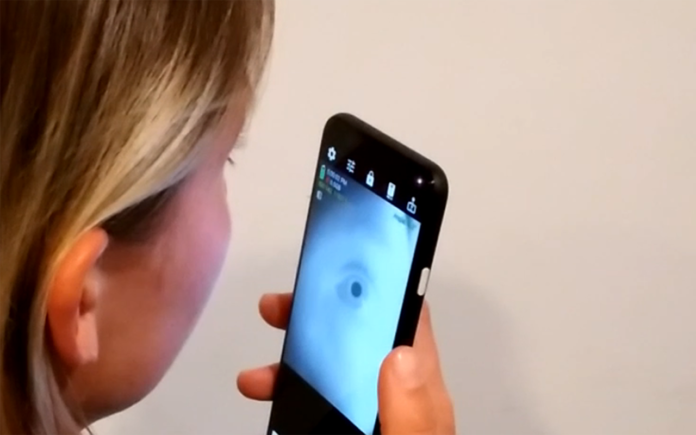By recording close-up images of eyes through an app, researchers at the University of California San Diego are making it possible for people to screen for Alzheimer’s disease, ADHD and other neurological diseases and disorders from the comfort of their own homes.
The app uses a near-infrared camera, which is built into newer smartphones for facial recognition, along with a regular selfie camera to track how a person’s pupil changes in size. These pupil measurements can be used to assess a person’s cognitive condition, researchers said in a press release published on April 29.
“While there is still a lot of work to be done, I am excited about the potential for using this technology to bring neurological screening out of clinical lab settings and into homes,” said Colin Barry, an electrical and computer engineering Ph.D. student at UC San Diego and the first author of the research paper.
“We hope that this opens the door to novel explorations of using smartphones to detect and monitor potential health problems earlier on,” he added.
According to the researchers, pupil size can provide information about a person’s neurological functions.
“For example, pupil size increases when a person performs a difficult cognitive task or hears an unexpected sound,” researchers said in the press release.
They explained that measuring the changes in pupil diameter can be done by performing what’s called a pupil response test.
According to the Optometry Times, the equipment required to perform pupil testing is minimal: all that’s needed is a millimeter ruler or pupillary gauge and a transilluminator, which is preferred over a disposable penlight due to the intensity of the light. However, it’s not something that gets done outside of a lab or clinic.
Trending Stories
Bill Murray accepts his behavior on set led to complaint, pause of latest film
‘Rolling Thunder’ protesters rally in front of parliament as police stage operation
A diagram of the flow from data acquisition to the final data. A user self administers a pupil response test, then the data are collected off-device to compute the distance and pupil diameter. The final result is shown on the far right. Credit: Digital Health Lab.
A psychiatry professor at UC San Diego School of Medicine, Eric Granholm, said the app can be used for large-scale community screenings as it’s minimally invasive and inexpensive.
“(It will) aid in the detection and understanding of diseases like Alzheimer’s disease. This could have a huge public health impact,” Granholm said.
According to the research, the app’s measurements were comparable to those taken by a device called a pupillometer, which is the gold standard for measuring pupil size.
Neurodivergent author releases memoir about diagnosis – Apr 2, 2022
The researchers also included various features in their app to make it more user-friendly for older adults.
“For us, one of the most important factors in technology development is to ensure that these solutions are ultimately usable for anyone. This includes individuals like older adults who might not be accustomed to using smartphones,” said Barry.
For that reason, the app includes voice commands, image-based instructions and a cheap, plastic scope to direct the user to place their eye within the view of the smartphone camera.
The Digital Health Lab, which uses digital technology to promote health, said it is continuing this work to allow the testing of a pupil’s size on any smartphone rather than just the newer smartphones.
Future studies will also involve working with older adults to evaluate home use of the technology, the researchers said.
In the meantime, the team will work with older individuals with mild cognitive impairment to test the app as a risk screening tool for early-stage Alzheimer’s disease.
The paper entitled At-Home Pupillometry using Smartphone Facial Identification Cameras describing the app’s technology will be presented at the ACM Computer Human Interaction Conference on Human Factors in Computing Systems, which will take place from April 30 to May 5 in New Orleans.
© 2022 Global News, a division of Corus Entertainment Inc.



